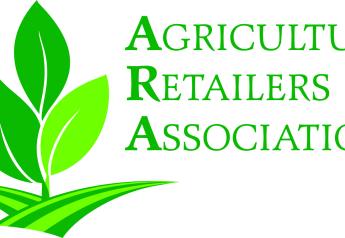Vilsack Weighs In On Parallel Between COVID-19 and Animal Disease Outbreaks

If the COVID-19 pandemic has taught the country anything, USDA Secretary of Agriculture nominee Tom Vilsack said it’s that there is a tremendous amount of synergy between the circumstances of a pandemic involving humans and those involving animals.
During the Coalition for Epi Response, Engagement and Science (CERES) Biosecurity Infectious Disease Symposium at Colorado State University (CSU) on Jan. 28, Vilsack explored the parallels between the animal and human infectious disease pandemics with CSU Vice President for Research Alan Rudolph.
A coordinated response
Vilsack said there are three lessons learned from the pandemic that can help the country better prepare for future human and animal infectious disease outbreaks.
“It’s pretty clear. Lesson number one is the sooner you can detect a problem, the better,” Vilsack said. “Clearly, we didn't respond aggressively to the pandemic early in the process and we are currently paying for that failure to early detect.”
The second lesson learned is that incredible coordination is required during a disease outbreak, whether it's an animal disease situation or human disease situation, he said. This starts with the ability of every government level – local, state, federal – to coordinate and work together.
“We're now seeing that the challenge with reference to the vaccine distribution not being well coordinated, and obviously lives are at stake,” Vilsack said. “Tragically, we are seeing in places like Los Angeles, difficulties with this issue as it relates to the pandemic. We've certainly seen it with animal disposal as well. We need a more effective and efficient disposal method.”
Thirdly, the country needs to be able to create, distribute and manufacture vaccines more quickly. All of this involves effective communication, he added.
“It's pretty clear that we need to continue to invest in research and development, both in animal health and human health and understand the connection and coalition between the two. And that's going to require some resources. Hopefully, we've learned from this pandemic, and previous experiences, that it's important and necessary to invest in research and development,” Vilsack said.
Human and animal disease parallels
Being able to flex between human and animal disease research is important, Rudolph said. Many of the labs in the National Animal Health Laboratory Network (NAHLN) that sit on land-grant campuses have flexed during the COVID-19 pandemic.
“Many of these NAHLN diagnostic labs have shifted to being human CLIA diagnostic labs and really supported the infrastructure. We've seen a plasticity that I think is also a really interesting lesson learned – that we can flex between human and animal,” Rudolph said.
When Vilsack previously served as Secretary of Agriculture, the U.S. began building new assets to deal with large animal disease outbreaks like African swine fever and foot-and-mouth disease, Rudolph noted.
“It's pretty clear that we needed to modernize our facilities,” Vilsack said. “Plum Island was in very difficult shape. And while it was isolated from the continental 48 states and had a significantly lower risk of an escape of some disease or problem that would cause significant problems in the animal world, the move to Manhattan, Kan., creates a very incredibly secure facility with modern capacity to do what we need to do to better understand the nature of disease, how viruses are formulated and how they mutate over a period of time.”
Vilsack said it will be an important asset in the effort to detect disease early and be able to more effectively respond and prevent. However, he said the challenge is that we will always be confronted with animal diseases of one sort or another.
“We learned from the avian influenza situation that it took us a while to figure out what, and then it took us a while to figure out how to produce a vaccine, and then it took us a little while to produce it, and then a little while to distribute it,” Vilsack said. “The reality was that we saw fairly significant destruction of chickens and turkeys that really impacted and affected consumers, and obviously affected producers.”
Because of the pandemic, he believes the country has a heightened awareness now of the necessity of being able to respond quickly and effectively – from a national security perspective and economic security perspective – if the U.S. is hit with a pandemic or animal disease outbreak.
Editor’s Note: The CERES coalition brings together six premier land grant universities: University of California-Davis, Texas A&M University, Colorado State University, Kansas State University, Iowa State University and the University of Nebraska-Lincoln to mobilize land-grant university discoveries and innovations in agricultural infectious diseases. The coalition has integrated a network of federally funded bio-containment resources for surveillance, diagnostics and countermeasure production, while actively engaging communities through Extension engagement and outreach.
Read more:
ARS Advances Fight Against Deadly African Swine Fever Virus
5 Ways USDA Protected Animal Ag in 2020
Canada Fights Back Against Out-of-Control Wild Pig Population
K-9 "Kody" Sniffs Out Prohibited Sausages at Newark Airport
Animal Protein Sector Needs to Realign with 2020 Foodservice Survivors, CoBank Says







